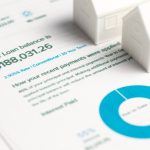For many people, student loans represent a double-edged sword—while they allow you to invest in higher education and open doors to better career opportunities, they can also weigh you down financially for years to come. A robust repayment plan can help you break free from this burden, replacing constant debt anxiety with a sense of control and progress. Whether you’ve just graduated or have been paying off loans for a while, mapping out a clear strategy to chip away at balances—or even tackle them aggressively—can make all the difference in achieving financial freedom.
1. Taking Stock: Understanding Your Current Loans
Before you can craft a successful repayment plan, you need to know exactly what you owe. Many students and graduates juggle multiple loans—some federal, some private—and each with different interest rates or grace periods. A thorough overview helps you identify the biggest cost drivers and which loans might require priority attention.
Where to Start
- List Every Loan: For each loan, note the lender, principal balance, interest rate, and minimum monthly payment. Check your credit report, National Student Loan Data System (for U.S. federal loans), or private statements if you’re unsure.
- Identify Rates and Terms: Some loans might be variable-rate, meaning the interest can fluctuate. Others might have fixed rates.
- Track Interest Accrual: Understanding how quickly interest accumulates on each loan helps you see which balances are ballooning faster.
2. Exploring Federal vs. Private Loan Options
Federal student loans and private loans operate differently, each with unique repayment flexibilities and interest structures. Prioritizing which to pay first often depends on interest rate and the potential benefits or drawbacks of certain programs.
Federal Loans
- Benefits: Access to income-driven repayment (IDR) plans, potential loan forgiveness programs, forbearance/deferment options, and typically fixed interest rates.
- Cons: Interest rates might be moderate but not always the lowest, and there can be restrictions on consolidating or refinancing in certain scenarios.
Private Loans
- Benefits: Might offer competitive rates if you had good credit, but rates can be variable. Sometimes no fees or flexible refinance terms.
- Cons: Typically less flexible if you face unemployment or reduced income, no universal forgiveness programs, and rates can spike if they’re variable.
3. Setting Clear Goals and Timelines
Aiming to pay off your student debt “as soon as possible” is too vague. Setting specific milestones—like paying off your highest-interest loan in two years—creates structure.
Goal-Setting Tips
- Identify an End Date: For instance, a 10-year payoff might be feasible with your current income. Or, if you’re more aggressive, you might shoot for 5 years.
- Use a Budget: Integrate your monthly loan payments into a broader budget to see how much more you can allocate.
- Emergency Fund First: While you might be tempted to throw every spare dollar at loans, maintaining at least 3–6 months of living expenses in an emergency fund is wise to avoid new debt if unexpected costs arise.
4. The Debt Avalanche vs. Snowball Methods
It’s common to have multiple student loans with varying rates. So, deciding the order in which you’ll tackle them is crucial—two main strategies often come up: debt avalanche and debt snowball.
- Debt Avalanche
- Approach: Pay the minimum on all loans, but put any extra funds toward the loan with the highest interest first. Once it’s paid off, move on to the next highest interest.
- Pros: Mathematically the quickest, interest-savings approach.
- Cons: May lack smaller “wins” early on if your highest-interest loan also has a large balance.
- Debt Snowball
- Approach: Pay extra on the smallest balance first (regardless of interest rate), then move on to the next smallest.
- Pros: Quick psychological victories boost motivation.
- Cons: May pay more in interest overall if your highest-rate loan is also large.

5. Considering Income-Driven Repayment and Forgiveness Programs
For borrowers with large federal student debt relative to their income, income-driven repayment (IDR) plans can offer relief by capping monthly payments at a fraction of your discretionary income. Additionally, certain loan forgiveness programs exist for public service or teaching roles.
IDR Basics
- Common Plans: PAYE (Pay As You Earn), REPAYE (Revised Pay As You Earn), IBR (Income-Based Repayment).
- Monthly Payment: Could be as low as 10–15% of your disposable income. After 20–25 years of on-time payments, any remaining balance might be forgiven (though potentially taxed).
- Annual Recertification: You must recertify your income each year, adjusting your monthly payment accordingly.
Loan Forgiveness
- Public Service Loan Forgiveness (PSLF): Typically requires 10 years of payments under a qualifying plan, while working full-time for a qualifying public service employer.
- Teacher Loan Forgiveness: Some teachers in low-income schools can have a portion of loans forgiven after 5 years.
6. Refinancing or Consolidating Loans
Refinancing (usually for private loans) can lower your interest rate if your credit has improved since you took out the original loan, or if rates in general have dropped. Consolidation (for federal loans) can combine multiple loans into one, simplifying payments. However, each route has pros/cons.
Refinancing
- Pros: Potentially lower rates, simplified single payment, chance to choose new term length (like 5, 10, or 15 years).
- Cons: If you refinance federal loans into a private loan, you lose federal perks (IDR, forbearance, forgiveness).
- Ideal For: Those with stable income, good credit, no desire for federal loan benefits, and a clear plan to pay off quickly.
Federal Consolidation
- Pros: Combines multiple federal loans into one, potentially unlocking certain repayment plans or simplifying bills.
- Cons: Weighted average interest rate—no real interest cost savings, plus you might lose certain benefits tied to original loans (like certain PSLF-eligible perks).
7. Budgeting for Extra Payments
Paying only the minimum every month keeps you on track but doesn’t accelerate your path to zero debt. By factoring in extra amounts—however small—toward principal, you shorten your timeline and reduce total interest paid.
Techniques
- Automatic Transfers: Set up a monthly auto-payment that’s $50–$200 above the minimum. Making it automatic removes the temptation to spend that money elsewhere.
- Windfalls: Tax refunds, bonuses, or gifts can be used to knock down a chunk of your highest-interest balance.
- Side Hustles: Earmark income from a part-time gig or freelance project solely for loan overpayments.
8. Tracking Progress and Staying Motivated
Student loan repayment can span years, so maintaining momentum is key. Breaking up the journey into milestones or using tools to visualize progress helps combat “debt fatigue.”
Motivation Tips
- Celebrate Small Wins: Once you fully pay off a smaller loan or chunk of a big one, treat yourself modestly.
- Track in a Spreadsheet or App: Observing balances dropping can be satisfying.
- Refocus on Goals: Remember that being debt-free can free up money for a house down payment, travel, or future financial goals.
Going from student loans to zero debt is fully achievable with a strategic, methodical approach. Start by listing every loan’s interest rate and balance, identifying whether you prefer avalanche or snowball payoff tactics. If you face high monthly payments, consider federal income-driven plans or exploring loan forgiveness if eligible. Meanwhile, be open to refinancing if you can lock in a significantly lower rate—just be mindful of losing certain federal benefits.
A budget that accommodates extra principal payments accelerates your path to a debt-free life, and harnessing motivational tools—like celebrating each loan closure—keeps you engaged. Even if the finish line seems far away now, consistent progress leads to that momentous day when you mail your final payment. By pairing discipline, careful planning, and wise use of available resources (like consolidation or IDR for federal loans), you can transform student debt from a long-standing burden into a memory—and open the door to new financial goals free of educational debt.



